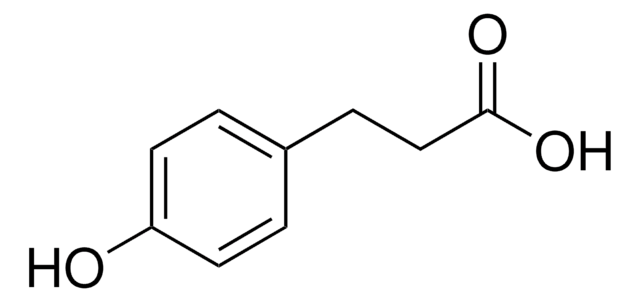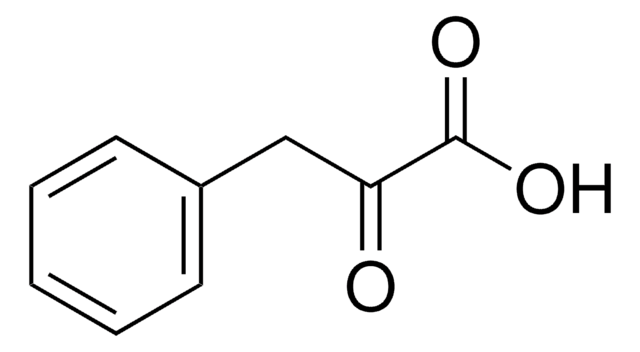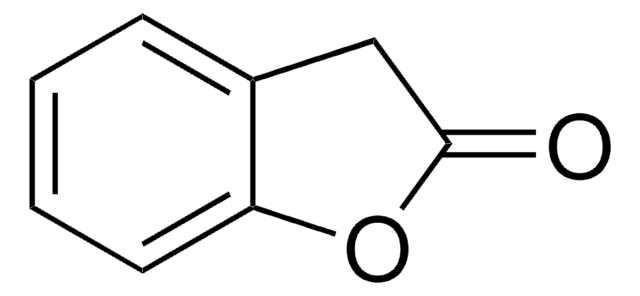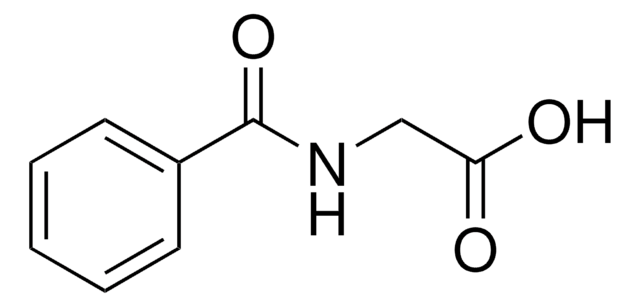H49804
邻羟基苯乙酸
ReagentPlus®, 99%
同義詞:
(2-Hydroxyphenyl)acetic acid, (o-Hydroxyphenyl)acetic acid, 2-(2-Hydroxyphenyl)acetic acid, 2-(2′-Hydroxyphenyl)acetic acid, 2-HPAA, 2-Hydroxybenzeneacetic acid
登入查看組織和合約定價
全部照片(1)
About This Item
線性公式:
HOC6H4CH2CO2H
CAS號碼:
分子量::
152.15
Beilstein:
908000
EC號碼:
MDL號碼:
分類程式碼代碼:
12352100
PubChem物質ID:
NACRES:
NA.22
推薦產品
品質等級
產品線
ReagentPlus®
化驗
99%
mp
145-147 °C (lit.)
SMILES 字串
OC(=O)Cc1ccccc1O
InChI
1S/C8H8O3/c9-7-4-2-1-3-6(7)5-8(10)11/h1-4,9H,5H2,(H,10,11)
InChI 密鑰
CCVYRRGZDBSHFU-UHFFFAOYSA-N
尋找類似的產品? 前往 產品比較指南
法律資訊
ReagentPlus is a registered trademark of Merck KGaA, Darmstadt, Germany
未找到適合的產品?
試用我們的產品選擇工具.
訊號詞
Warning
危險聲明
危險分類
Eye Irrit. 2 - Skin Irrit. 2 - STOT SE 3
標靶器官
Respiratory system
儲存類別代碼
11 - Combustible Solids
水污染物質分類(WGK)
WGK 3
閃點(°F)
Not applicable
閃點(°C)
Not applicable
個人防護裝備
dust mask type N95 (US), Eyeshields, Gloves
Tania Irebo et al.
Journal of the American Chemical Society, 130(29), 9194-9195 (2008-06-28)
Proton coupled electron transfer (PCET) from tyrosine covalently linked to Ru(bpy)32+ has been studied with laser flash-quench techniques. Two new complexes with internal hydrogen bonding bases to the phenolic proton have been synthesized. Depending on the hydrogen bonding and protonation
D Ratanasavanh et al.
Fundamental & clinical pharmacology, 10(6), 504-510 (1996-01-01)
We compared the cytotoxic effect of coumarin and its derivatives, 7-hydroxycoumarin (7-OHC), 4-hydroxycoumarin (4-OHC), o-hydroxyphenyl acetic acid (OHPAA) and o-coumaric acid (CA), on cultured hepatocytes from human, rat, mouse and rabbit liver. At 10(-5) and 5 x 10(-5) M, coumarin
M Bayat-Sarmadi et al.
Molecular and cellular endocrinology, 92(1), 127-134 (1993-03-01)
Prolactin has many known functions and one of them is to induce the expression of milk protein gene expression in the mammary gland. Specific membrane receptors have been recently characterized but the transduction mechanism involved in the transfer of the
S L Born et al.
Food and chemical toxicology : an international journal published for the British Industrial Biological Research Association, 41(2), 247-258 (2002-12-14)
Coumarin, a well recognized rat hepatotoxicant, also causes acute, selective necrosis of terminal bronchiolar Clara cells in the mouse lung. Further, chronic oral gavage administration of coumarin at 200 mg/kg, a dose that causes Clara cell death, resulted in a
Jeffrey D Vassallo et al.
Toxicological sciences : an official journal of the Society of Toxicology, 80(2), 249-257 (2004-05-14)
Hepatotoxicity of coumarin is attributed to metabolic activation to an epoxide intermediate, coumarin 3,4-epoxide (CE). However, whereas rats are most susceptible to coumarin-induced hepatotoxicity, formation of CE is greatest in mouse liver microsomes, a species showing little evidence of hepatotoxicity.
我們的科學家團隊在所有研究領域都有豐富的經驗,包括生命科學、材料科學、化學合成、色譜、分析等.
聯絡技術服務









